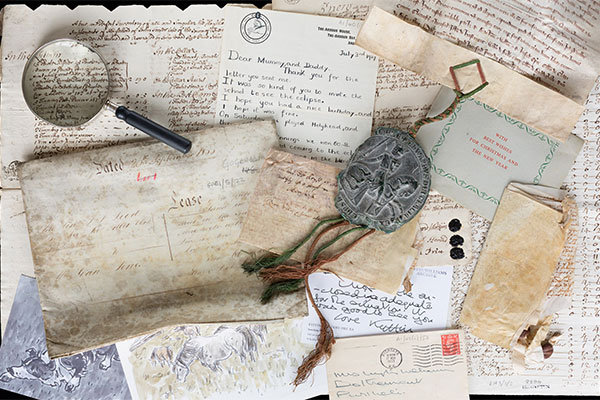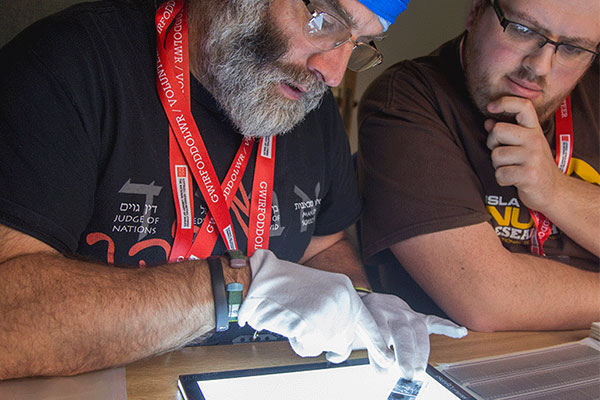Robert Dawson’s 1832 boundary maps
Changing the electoral geography of Britain
For many years prior to 1832 there had been calls for the reform of Parliamentary representation in Britain. In 1831 Lord Grey became Prime Minister and introduced a reform bill, which finally passed at the third attempt becoming the Representation of the People Act 1832. This totally changed the electoral geography of the county and greatly increased the electorate. Many old Boroughs were altered or disappeared, and new boroughs were created.
All of these changes needed to be codified so that the exact extent of the Boroughs was known. In order to achieve this, another act, the Parliamentary Boundaries Act 1832 was passed. This established the boundaries of all the boroughs in England and Wales. These boundaries were established by a Boundary Commission, set up for the purpose, and led by Thomas Drummond (1797-1840) of the Ordnance Survey.
Robert Kearsley Dawson (1798-1861), also of the Ordnance Survey, was appointed to produce accurate maps showing both the existing and proposed changes to the parliamentary boundaries. These maps were initially published in Reports from Commissioners on proposed divisions of Counties and boundaries of boroughs, in 1832, but were then republished together as Plans of the Cities and Boroughs of England and Wales in the same year.
In 1836 Dawson went on to be appointed Assistant Commissioner to the Tithe Commutation Commission, organising and superintending the surveys on which the permanent commutation of tithes in England and Wales was to be recorded.
The maps which he produced were based on Ordnance Survey information, but, while the county maps were made at reduced scales from the published one-inch map, the maps of the individual boroughs were produced at a larger scale of two inches to a mile, sometimes with larger scale insets at six inches to a mile.
This makes these maps some of the most detailed Ordnance Survey mapping to date and for some towns the first detailed town plan available.
- Anglesey (MAP 3633)
- Amlwch (MAP 3623)
- Holyhead (MAP 5671)
- Llangefni (MAP 3629)
- Brecknockshire (MAP 3634)
- Brecknock (MAP 3625)
- Caermarthenshire (MAP 3636)
- Caermarthen (MAP 3814)
- Llanelly (MAP 5840)
- Cardiganshire (MAP 3635)
- Cardigan (MAP 5801)
- Aberystwith (MAP 5793)
- Adpar (MAP 5799)
- Lampeter (MAP 3628)
- Caernarvonshire (MAP 3813)
- Bangor (MAP 3624)
- Criccieth (MAP 5742)
- Nevin (MAP 5745)
- Pwllheli (MAP 5746)
- Denbighshire (MAP 5869)
- Holt (MAP 3626)
- Wrexham (MAP 3632)
- Flintshire (MAP 5907)
- St. Asaph (MAP 3631)
- Holywell (MAP 3627)
- Glamorganshire (MAP 5950)
- Cardiff (MAP 5958)
- Aberdare (MAP 5953)
- Cowbridge (MAP 5965)
- Llantrissent (MAP 5970)
- Merthyr Tydfil (MAP 5975)
- Llandaff (MAP 5969)
- Swansea (MAP 5990)
- Aberavon (MAP 5952)
Kenfig (MAP 5968)
- Loughor (MAP 5972)
- Neath (MAP 5981)
- Merionethshire (MAP 6044)
- Monmouthshire (MAP 6154)
- Monmouth (MAP 6148)
- Newport (on Usk) (MAP 6157)
- Usk (MAP 6152)
- Montgomeryshire (MAP 6394)
- Llanfyllin (MAP 6395)
- Llanidloes (MAP 6396)
- Machynlleth (MAP 6397)
- Newtown (MAP 6398)
- Welsh Pool (MAP 6399)
- Pembrokeshire (MAP 6455)
- Haverfordwest (MAP 3619)
- Fishguard (MAP 6449)
- Narberth (MAP 6456)
- St. Davids (MAP 6459)
- Pembroke (MAP 3630)
- Milford (MAP 6452)
- Tenby (MAP 6461)
- Wiston (MAP 6460)
- Radnorshire (MAP 6525)
- Cefnllys (MAP 6509)
- Knighton (MAP 6513)
- Knucklas (MAP 6514)
- Presteign (MAP 6517)
- Rhadyr (MAP 6523)
Robert Dawson’s 1837 boundary maps
The effect of the Municipal Corporations Act 1835
In 1833, following on from the Parliamentary reforms of 1832, the Whig government under Lord Grey set up a Royal Commission to examine local government in England and Wales.
The Commission reported in 1835 and found that the governance of Borough Corporations was undemocratic and that many of the Boroughs did not actually cover the modern extent of the towns they represented.
The result was the Municipal Corporations Act 1835, which created new rules for running of Boroughs and also adjusted the boundaries of many of the Boroughs to match the Parliamentary Boundaries established in 1832.
Robert Dawson was called upon to create a set of maps showing these new boundaries. These were published in 1837 in the Report of the commissioners appointed to report and advise upon the boundaries and wards of certain boroughs and corporate towns, (England and Wales).
These plans consist of a map of the Borough at the scale of four inches to a mile, some maps also have a smaller map at a scale of one inch to a mile, showing a wider area when the municipal boundary was to become much smaller than previously. Again, the plans were based on Ordnance Survey information, now enlarged for this purpose.
- Aberystwith (MAP 5791)
- Beaumaris (MAP 5666)
- Brecknock (MAP 5710)
- Cardiff (MAP 5957)
- Cardigan (MAP 5454)
- Carmarthen (MAP 5830)
- Carnarvon (MAP 5751)
- Denbigh (MAP 5871)
- Flint (MAP 5906)
- Haverfordwest (MAP 6451)
- Llandovery (MAP 5844)
- Llanidloes (MAP 6392)
- Monmouth (MAP 6166)
- Neath (MAP 5985)
- Newport on Usk (MAP 6160)
- Pembroke (MAP 6454)
- Pwllheli (MAP 5750)
- Ruthin (MAP 5875)
- Swansea (MAP 5994)
- Tenby (MAP 6458)
- Welch Pool (MAP 6415)
Henry James’s 1868 boundary maps
Representation of the People Act 1867
After the modest reforms of the 1832 Act the calls for further electoral reform grew over the following decades, by the 1860s the threat of mass civil disturbance encouraged Benjamin Disraeli to introduce a second reform bill which was passed and became the Representation of the People Act 1867.
This act extended the franchise further removed some Boroughs and created new ones, this required that a new set of maps be produced. The 1868 Boundary Act set up a Boundary Commission to establish the limits of the new and altered Boroughs and it was for this Commission that the new maps were created.
This time the maps were made under the auspices of, the then, Colonel Henry James (1803–1877) who was the Director of the Ordnance Survey at the time. These maps were published in the Report of the Boundary Commissioners for England and Wales, 1868.
While the majority of the maps are at a scale of one inch to a mile there are also a number at a scale of two inches to a mile and even some at a scale of four inches to a mile.
- Beaumaris : contributory borough of Llangefni (MAP 5670)
- Beaumaris : contributory borough of Holyhead (MAP 5669)
- Beaumaris : contributory borough of Amlwch (MAP 5668)
- Beaumaris : contributory borough of Beaumaris (MAP 5667)
- Brecon (MAP 5680)
- Cardiff : contributory borough of Cardiff (From Col. 16929)
- Cardiff : contributory borough of Llantrissaint (MAP 3828)
- Cardiff : contributory borough of Cowbridge (MAP 3825)
- Cardigan : contributory borough of Lampeter (MAP 5804)
- Cardigan : contributory borough of Adpar (MAP 5800)
- Cardigan : contributory borough of Aberystwyth (MAP 5794)
- Cardigan : contributory borough of Cardigan (MAP 5803)
- Carmarthen : contributory borough of Llanelly (MAP 5839)
- Carmarthen : contributory borough of Carmarthen (MAP 5835)
- Carnarvon : contributory borough of Nevin and Pwllheli (MAP 5743)
- Carnarvon : contributory borough of Conway (MAP 5738)
- Carnarvon : contributory borough of Criccieth (MAP 5740)
- Carnarvon : contributory borough of Bangor (MAP 5739)
- Carnarvon : contributory borough of Carnarvon (MAP 5737)
- Denbigh : contributory borough of Ruthin (MAP 3816)
- Denbigh : contributory borough of Wrexham and Holt (MAP 5879)
- Denbigh : contributory borough of Denbigh (MAP 5876)
- Flint : contributory borough of St. Asaph (MAP 5913)
- Flint : contributory borough of Rhuddlan (MAP 5912)
- Flint : contributory borough of Overton (MAP 5911)
- Flint : contributory borough of Mold (MAP 3824)
- Flint : contributory borough of Holywell (MAP 5908)
- Flint : contributory borough of Caerwys (MAP 3826)
- Flint : contributory borough of Caergwyle (MAP 3818)
- Flint : contributory borough of Flint (MAP 3821)
- Haverfordwest : contributory borough of Narberth (MAP 3822)
- Haverfordwest : contributory borough of Fishguard (MAP 3817)
- Haverfordwest : contributory borough of Haverfordwest (MAP 3820)
- Merthyr Tydvil (MAP 5978)
- Monmouth : contributory borough of Monmouth (MAP 6137)
- Monmouth : contributory borough of Usk (MAP 6146)
- Monmouth contributory borough of Newport (MAP 6141)
- Montgomery : contributory borough of Welshpool (MAP 6412)
- Montgomery : contributory borough of Machynlleth (MAP 6406)
- Montgomery contributory borough of Llanidloes (MAP 6405)
- Montgomery contributory borough of Llanfyllin (MAP 6400)
- Montgomery contributory borough of Montgomery and Newtown (MAP 6409)
- Pembroke : contributory borough of Wiston (MAP 3819)
- Pembroke : contributory borough of Tenby (MAP 3815)
- Pembroke : contributory borough of Milford (MAP 3827)
- Pembroke : contributory borough of Pembroke (MAP 3823)
- New Radnor : contributory borough of Cefnllys (MAP 6493)
- New Radnor : contributory borough of New Radnor (MAP 6499)
- New Radnor : contributory borough of Presteign (MAP 6502)
- New Radnor : contributory borough of Rhayader (MAP 6507)
- New Radnor : contributory boroughs of Knighton and Knucklas (MAP 6496)
- Swansea : contributory borough of Loucher (MAP 5988)
- Swansea : contributory borough of Neath and Aberavon (MAP 5989)
- Swansea : contributory borough of Swansea (MAP 5995)
- Swansea : contributory borough of Kenfig (MAP 5987)




